Early on my attitudes about art were shaped by the thinking exemplified in Questions to Stella and Judd by Bruce Glaser (Art News, 1966* ), e.g.:
GLASER: Why do you want to avoid compositional effects?
JUDD: Well, all those effects tend to carry with them all the structures, values, feelings of the whole European tradition. It suits me fine if that’s all down the drain.
Recently I was at the Metropolitan Museum of Art and found myself marveling at Ugolino and His Sons (modeled ca. 1860–61, executed in marble 1865–67) by Jean-Baptiste Carpeaux (French, 1827–1875). Far from the minimalist 60s values of Frank Stella and Donald Judd.
I’ve walked by this piece many times before. It was far too melodramatic for me. This time just this little detail caught my eye:
Really!?!? Interwoven toes?
Once stopped I noticed more.
Digression: Once upon a time a farmer was motoring down a country road when he came across a friend pulling on a rope tied to a mule. The mule was steadfast. The farmer asked, “What are you doing?” “Trying to get this dang mule to cross the road,” replied his friend.
The farmer reached into the back of his truck and grabbed a short length of two-by-four. He walked up to the mule, gave it strong whack on the back of the head, and calmly led the mule across the road.
“How’d you do that!?” asked his friend. “First you gotta get their attention,” said the farmer.
(Apologies to animal rights activists.)
How do these figures manage to fit together?
Like a great mannerist puzzle. Look at the delicacy of the child—and yet more straining toes!
Then I noticed the hole through the whole…
Back to Stella and Judd:
STELLA: Maybe that’s the quality of simplicity. When Mantle hits the ball out of the park, everybody is sort of stunned for a minute because it’s so simple. He knocks it out of the park, and that usually does it.
Carpeaux is not simple. He knocks it outta the park. Very complicated. Amazing. Still sappy melodrama to me. But I’ve got to respect him as an artist.
From the Met’s web site:
H. 77 in. (195.6 cm)
Signed (incised in script at right front facet of base): Jbte Carpeaux./Rome 1860; (incised at right end facet of base) JBTE CARPEAUX ROMA 1860
Purchase, Josephine Bay Paul and C. Michael Paul Foundation Inc. Gift and Charles Ulrick and Josephine Bay Foundation Inc. Gift, and Fletcher Fund, 1967 (67.250)
Dante’s Divine Comedy has always enjoyed favor in the plastic arts. Ugolino, the character that galvanized peoples’ fantasies and fears during the second half of the nineteenth century, appears in Canto 33 of the Inferno. This intensely Romantic sculpture derives from the passage in which Dante describes the imprisonment in 1288 and subsequent death by starvation of the Pisan count Ugolino della Gherardesca and his offspring. Carpeaux depicts the moment when Ugolino, condemned to die of starvation, yields to the temptation to devour his children and grandchildren, who cry out to him:
But when to our somber cell was thrown
A slender ray, and each face was lit
I saw in each the aspect of my own,
For very grief both of my hands I bit,
And suddenly from the floor arising they,
Thinking my hunger was the cause of it,
Exclaimed: Father eat thou of us, and stay
Our suffering: thou didst our being dress
In this sad flesh; now strip it all away.


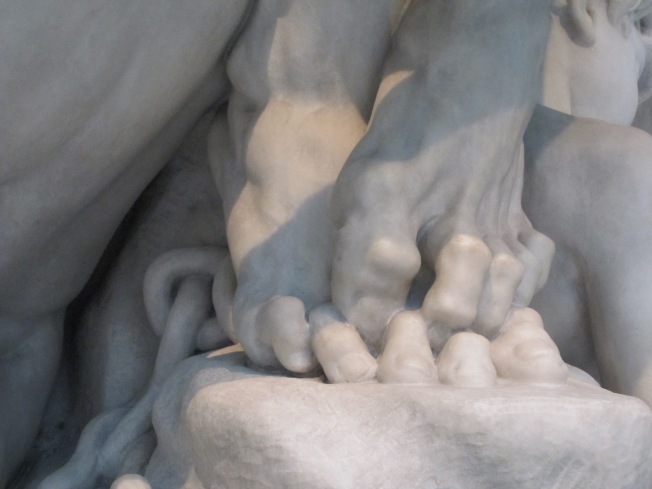
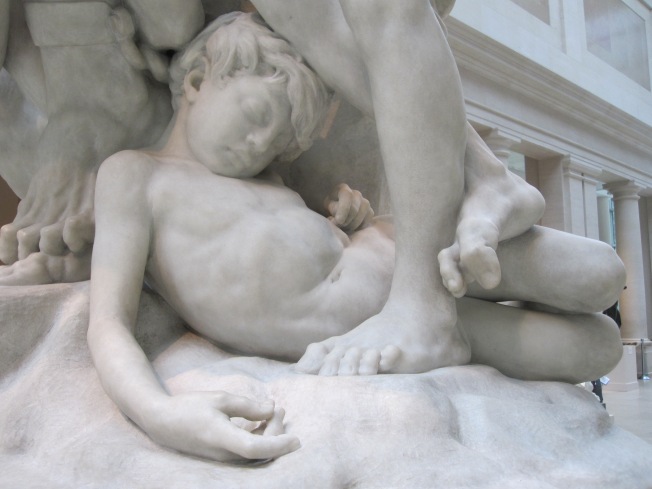

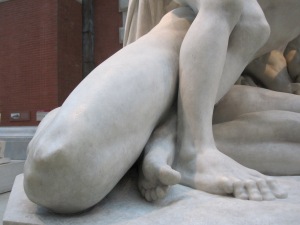
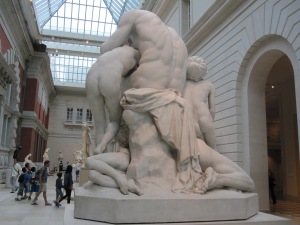
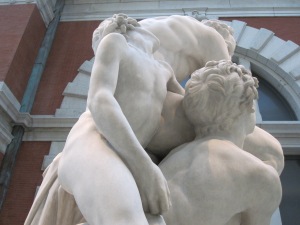
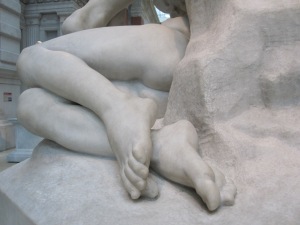

I think Judd and a lot of other artists were trying to drain melodrama or metaphor from art because they saw how those things were co-opted into wars and nation building. They wanted art that couldn’t be ideologically weaponized. It was actually a very romantic notion. …not certain if any art strategy actually escapes the demons it hopes to avoid.